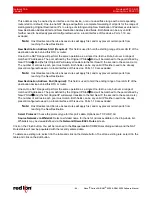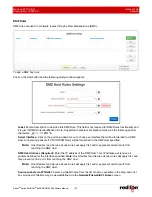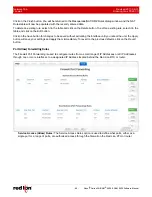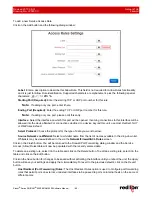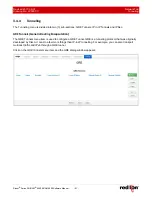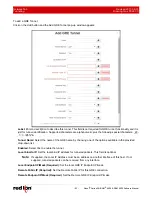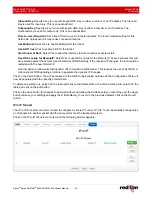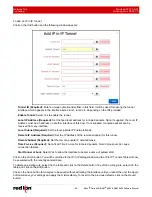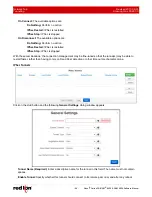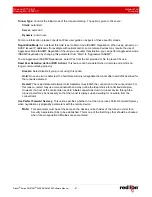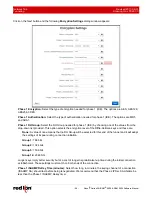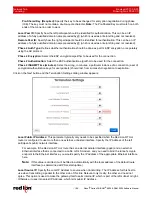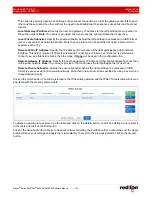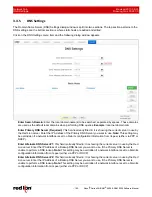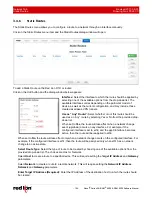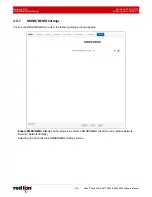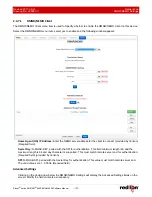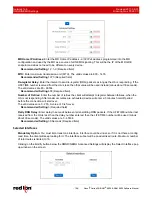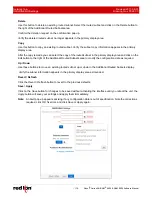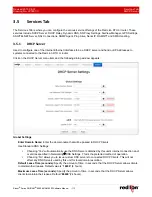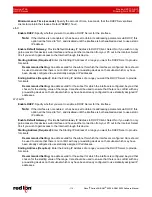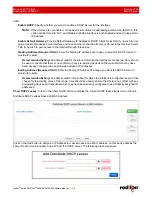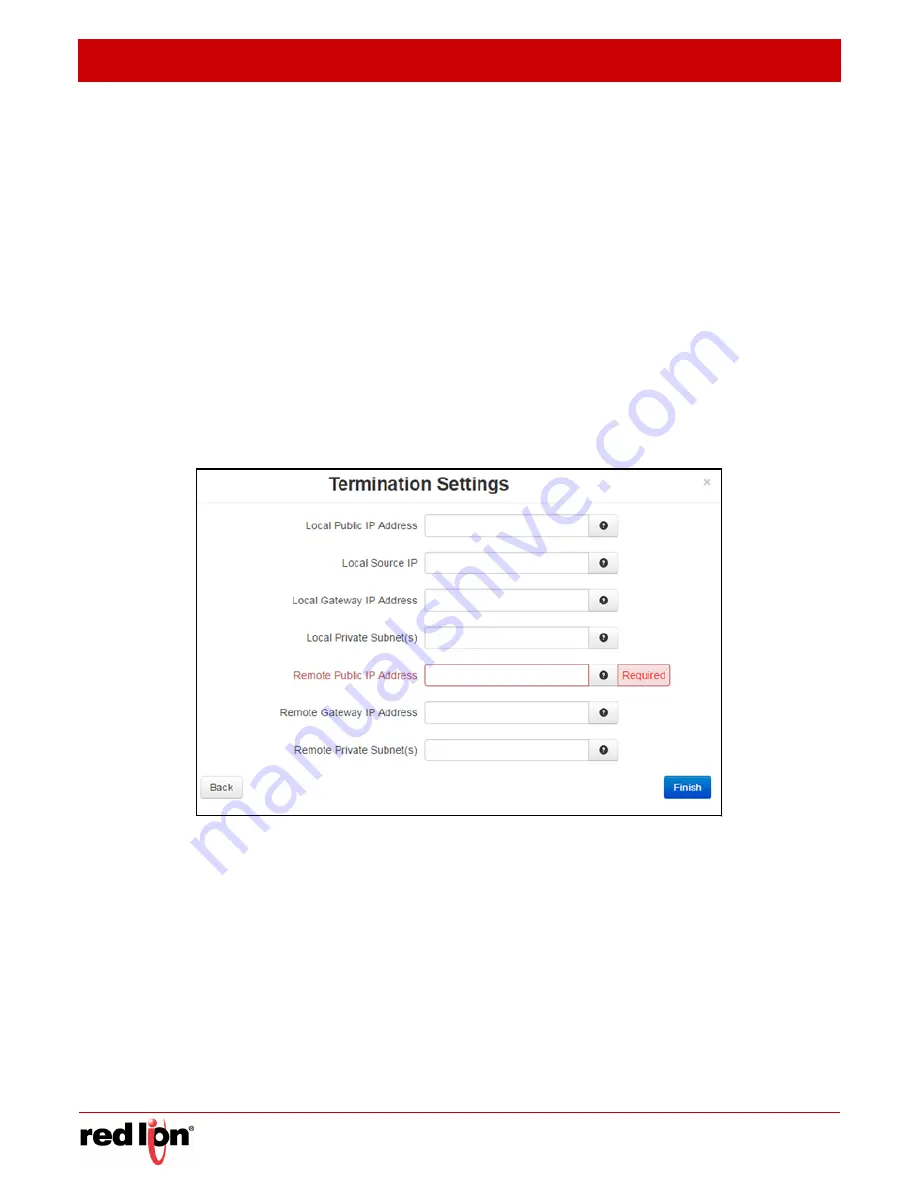
Network Tab
Revised 2017-08-31
Tunneling
Drawing No. LP0997-C
- 100 -
Sixnet
®
Series SN/RAM
®
6000 & RAM 9000 Software Manual
Pre-Shared Key (Required):
Specify the key to be exchanged for encryption negotiation during phase
(IKE). The key must not contain a double-quote character.
Note:
The Pre-Shared Key must match on both
ends of the tunnel in order to work.
Local Peer ID:
Specify how the left participant should be identified for authentication. This can be an IP
address of a fully qualified domain name preceded by @ (which is used as a literal string and not resolved).
Remote Peer ID:
Specify how the right participant should be identified for authentication. This can be an IP
address of a fully qualified domain name preceded by @ (which is used as a literal string and not resolved).
Phase 2 Auth Type:
Defines whether authentication should be done as part of ESP encryption, or separately
using the AH protocol.
Phase 2 Encryption:
Select the ESP encryption algorithm to be used for the connection.
Phase 2 Authentication:
Select the ESP authentication algorithm to be used for the connection.
Phase 2 ISAKMP Time (minutes):
Select how long, in minutes, a particular instance of a connection (a set of
encryption/authentication keys for user packets) should last, from successful negotiation to expiration.
Click on the
Next
button and the Termination Settings dialog window appears:
Local Public IP Address:
This parameter typically only needs to be specified when the Red Lion RTU or
router is configured to use more than one external, untrusted interface. Specify the IP Address of the left
participant’s public network interface.
For example, if the Red Lion RTU or router has an external cellular interface (ppp0) and an external
Ethernet interface that is connected to a cable or DLS modem, and you need to bind the tunnel’s crypto
endpoint to the Ethernet interface, you would specify the IP address of the appropriate Ethernet interface
here.
Note:
If this value is omitted, it will be filled in automatically with the local address of the default route
interface (as determined at IPSec startup time).
Local Source IP:
Specify the Local IP Address to source when transmitting. The IP Address for this host to
use when transmitting a packet to the other side of this link. Relevant only locally, the other end need not
agree. This option is used to make the gateway itself use its internal IP, which is part of the left subnet or right.
Otherwise, it uses its nearest IP Address, which is its public IP Address.

